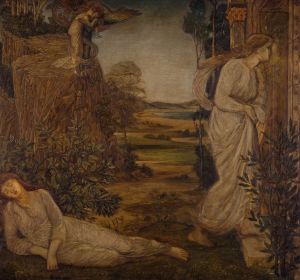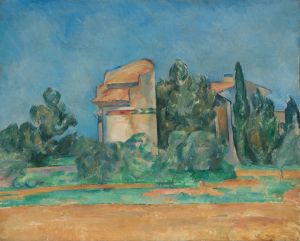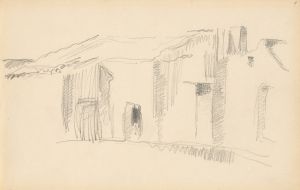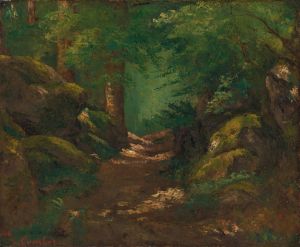
Rochers et branches à Bibémus
A hand-painted replica of Paul Cézanne’s masterpiece Rochers et branches à Bibémus, meticulously crafted by professional artists to capture the true essence of the original. Each piece is created with museum-quality canvas and rare mineral pigments, carefully painted by experienced artists with delicate brushstrokes and rich, layered colors to perfectly recreate the texture of the original artwork. Unlike machine-printed reproductions, this hand-painted version brings the painting to life, infused with the artist’s emotions and skill in every stroke. Whether for personal collection or home decoration, it instantly elevates the artistic atmosphere of any space.
Paul Cézanne's painting "Rochers et branches à Bibémus" is a notable work that exemplifies the artist's innovative approach to landscape painting. Created during the late 19th century, this painting is part of Cézanne's exploration of the Bibémus Quarry, a site near Aix-en-Provence in southern France. The quarry was a frequent subject for Cézanne, who was captivated by its rugged terrain and the interplay of natural forms.
Cézanne's work at Bibémus is characterized by his unique method of capturing the essence of the landscape through a series of structured brushstrokes and a keen attention to the geometric forms found in nature. In "Rochers et branches à Bibémus," Cézanne employs a palette of earthy tones to depict the rocky outcrops and sparse vegetation of the quarry. The painting reflects his interest in the underlying structure of the natural world, as he sought to convey the solidity and permanence of the rocks and the dynamic interplay of light and shadow across the landscape.
The composition of "Rochers et branches à Bibémus" is marked by Cézanne's distinctive use of color and form. He often used a technique known as "constructive brushstroke," where each stroke contributes to the overall structure of the painting, creating a sense of depth and volume. This approach is evident in the way Cézanne renders the rocks and branches, using a combination of short, repetitive strokes and broader, more fluid applications of paint. The result is a harmonious balance between the natural elements and the artist's abstract interpretation of the scene.
Cézanne's work at Bibémus, including "Rochers et branches à Bibémus," played a significant role in the development of modern art. His exploration of form and color influenced a generation of artists, including the Cubists, who admired his ability to reduce natural forms to their geometric essentials. Cézanne's emphasis on the structural aspects of the landscape can be seen as a precursor to the abstraction that would dominate much of 20th-century art.
The painting also reflects Cézanne's personal connection to the Provençal landscape, which he considered an essential source of inspiration throughout his career. His repeated visits to Bibémus and other sites in the region underscore his commitment to capturing the unique qualities of the southern French countryside. This dedication to place is evident in the way Cézanne meticulously studied the forms and colors of the landscape, striving to convey its essence through his art.
"Rochers et branches à Bibémus" is a testament to Cézanne's innovative spirit and his enduring influence on the course of art history. The painting is celebrated for its bold composition and the artist's ability to transform a seemingly ordinary scene into a complex and compelling work of art. Today, Cézanne is recognized as a pivotal figure in the transition from 19th-century Impressionism to the more abstract and conceptual approaches of the 20th century, and works like "Rochers et branches à Bibémus" continue to be studied and admired for their groundbreaking contributions to the visual arts.


















